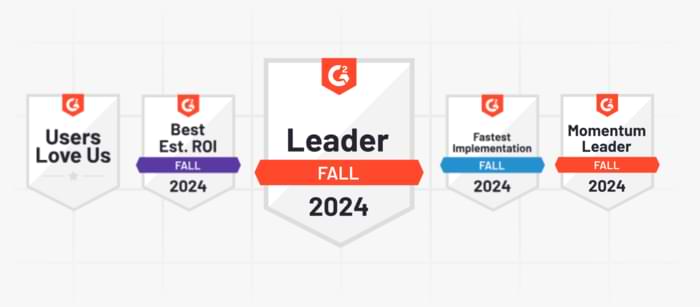Rating scales you can customize.
Rate ideas on their impact, confidence, ease or any other custom scale you define.
.png)


What is a good way to prioritize ideas?
Shortlisting valuable ideas quickly and easily is one of the benefits that make a good idea collection tool a must-have for modern businesses. Use multiple customizable rating systems to identify which ideas make it through to implementation and which are archived in the idea bank for later. You can adjust the weight or each of your custom rating criteria to pinpoint the exact business value of ideas based on the goals of your idea collection.
The next step is to actually do something with all those great ideas you have! This is where we’ll help you get started. We created an online Idea Collection Tool, so you can start collecting your ideas right away. It only takes 5 minutes to create an account and start building your idea collection, and if you don't want to use our website just download our app from Google Play or Apple App Store. Once you're ready to take action on your ideas, simply log into your Idea Collection Tool and follow the prompts to build your first idea list.
In the past, I would have said that the best way to prioritize was by “importance”. But this isn’t as helpful as it sounds. For example, what does important mean when talking about customer service? Do you consider a feature more important than a bug fix? Or how about features vs bugs? What about new features vs maintenance? How do you rank them?
There are many different ways to collect ideas. Some people prefer to write everything down on paper while others find it easier to type their thoughts onto a digital device like a smartphone. Whichever method works best for you, it's important to keep track of your ideas so they can be used effectively once the project starts. If you're using a notebook or notepad, make sure to jot down any relevant details, such as who suggested the idea, when it was suggested, and why it might work well for your company.
The collective brain power of the group will come up with some amazing solutions that wouldn’t be possible otherwise. And since everybody has their own unique perspective, you’re bound to see things from a fresh angle that nobody else could think of.
Start thinking about the future implications of each idea. When you’ve identified a few ideas that seem promising, try to imagine what impact these changes will have on your customers. Will it improve their experience? Reduce costs? Make life easier for employees? By considering the consequences of your ideas, you’ll gain invaluable insights on their impact.
What are some of the standard ways to evaluate ideas?
Rating scales like ICE (Impact, Confidence, Ease), PESTLE (Political, Economic, Social, Technological, Legal, Environmental) and SWOT (Strengths, Weaknesses, Opportunities, Threats) are very common tools for evaluating ideas. There are tons of other rating systems out there too, but these are probably the most popular ones.
How do you rate ideas?
It’s easy to fall into the trap of thinking that every idea needs to be rated. After all, if you knew for certain that your idea was going to fail, then why bother trying at all? However, you shouldn’t feel pressured to rate every single idea that comes across your desk. Instead, focus on the ideas that seem the most promising.
To begin, pick two or three of the ideas that interest you the most. Then, select the criteria that will be useful in determining whether to implement these ideas. For instance, if you were developing an ecommerce platform, you might choose "market interest" and "customer satisfaction" as the criteria for your rating system. Next, rate each idea according to its effectiveness against each criterion.
With an Idea Management platform like Ideanote, you can use multiple customizable rating systems to prioritize and sort your ideas. This allows you to quickly narrow down your list of ideas, while still being able to get a clear picture of their relative value.
Once you've narrowed down your list of ideas to just a handful, it's time to prioritize them. In this step, you'll want to consider how much effort each idea requires, the potential return on investment, and the likelihood of success. To help you decide which ideas should go forward you can sort all ideas by their average rating.
To make life easier for you you can ask other people to help you evaluate ideas on a fair and neutral basis. If you're working with a team, simply assign each person a different category to rank ideas in. Or, you can let everyone vote on ideas individually. This approach works best when you have a mix of experienced and inexperienced members on your team.
Frequently Asked Questions







